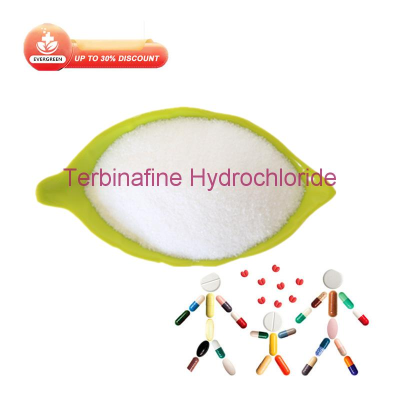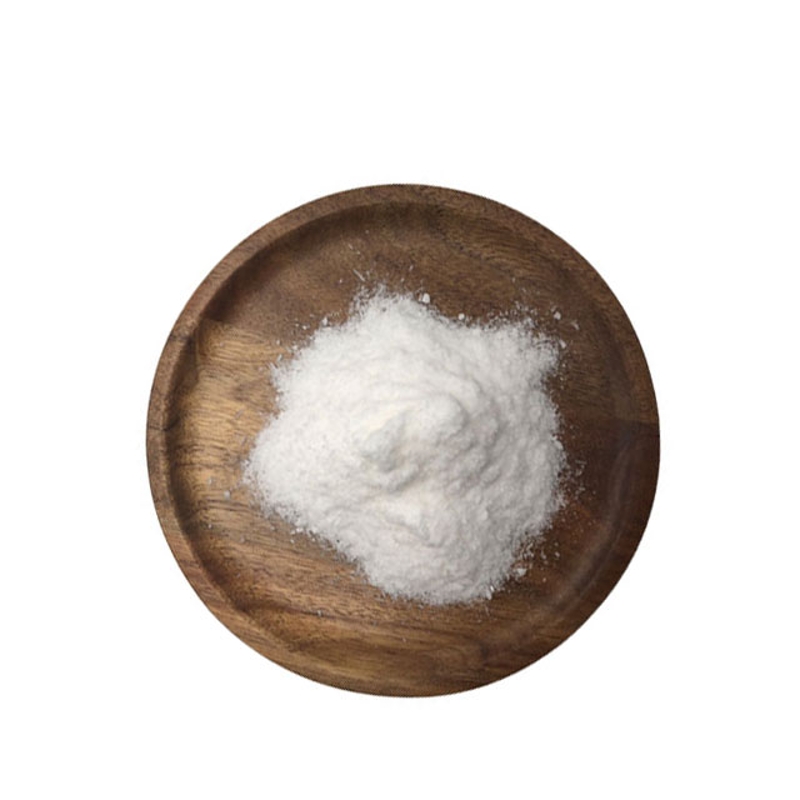-
Categories
-
Pharmaceutical Intermediates
-
Active Pharmaceutical Ingredients
-
Food Additives
- Industrial Coatings
- Agrochemicals
- Dyes and Pigments
- Surfactant
- Flavors and Fragrances
- Chemical Reagents
- Catalyst and Auxiliary
- Natural Products
- Inorganic Chemistry
-
Organic Chemistry
-
Biochemical Engineering
- Analytical Chemistry
- Cosmetic Ingredient
-
Pharmaceutical Intermediates
Promotion
ECHEMI Mall
Wholesale
Weekly Price
Exhibition
News
-
Trade Service
With the emergence of new crown variants such as Delta and Omicron , the domestic epidemic situation has become tense again recently.
Among them, the epidemic in Hong Kong is very serious.
On March 4, 52,523 new confirmed cases were added.
136 deaths were added
.
The COVID-19 pandemic, which has lasted for more than two years, is still not over, and the fight against the new coronavirus will continue
.
In order to fight the new crown epidemic, in addition to accelerating the development of vaccines and specific drugs against the mutant virus, it is also very important to trace the source of the new crown virus
Recently, the team of Academician Gao Fu, director of the Chinese Center for Disease Control and Prevention, published a new report on the source of the new coronavirus in the Huanan Seafood Market in Wuhan on the preprint platform Research Square - Surveillance of SARS-CoV-2 in the environment and animal samples of the Huanan Seafood Market
.
This report released the SARS-CoV-2 test results of 1,380 samples collected from the Huanan Seafood Market in early 2020: 73 environmental samples tested positive for COVID-19, mostly from the western area of the market, and were positively correlated with crowd density; All 457 animal samples of the species were negative
.
.
These results suggest that the novel coronavirus at the Huanan Seafood Market in Wuhan likely came from a mobile population rather than animals sold in the market
.
The research team said that the Huanan Seafood Market in Wuhan was not the origin of the new coronavirus, and the early outbreak was more likely to be caused by the new coronavirus carriers and the subsequent contaminated environment
The paper is currently undergoing peer review and may be officially published in Nature and its series of journals
.
Wuhan Huanan Seafood Market and Early COVID-19 Outbreak
Wuhan South China Seafood Market and Early COVID-19 Epidemic Wuhan South China Seafood Market and Early COVID-19 EpidemicWuhan Huanan Seafood Market is located in Jianghan District, Wuhan City, only 800 meters away from Hankou Railway Station, covering an area of 50,000 square meters
.
With 678 stalls before the outbreak, it was very crowded
The picture shows the Huanan Seafood Market in Wuhan before the outbreak of the new crown epidemic
The picture shows the Huanan Seafood Market in Wuhan before the outbreak of the new crown The picture shows the Huanan Seafood Market in Wuhan before the outbreak of the new crownThere are 10 stalls in the market selling wild animals, of which 8 are located in the southwest corner of the west area and 2 are located in the northwest corner of the east area
.
According to sales records, the wild animals sold by these shops at the end of December 2019 included snakes, poultry (chickens, ducks, geese, pheasants and pigeons), sika deer, badgers, rabbits, bamboo rats, porcupines, hedgehogs, salamanders, giant salamanders, crocodiles and Siamese crocodiles, among which snakes, salamanders and crocodiles are traded live
Distribution map of stalls in the Huanan Seafood Market in Wuhan
Distribution map of stalls in Huanan Seafood Market in Wuhan Distribution map of stalls in Huanan Seafood Market in WuhanAt the end of December 2019, the Huanan Seafood Market in Wuhan came into public view due to the outbreak of "pneumonia of unknown etiology".
Therefore, the Huanan Seafood Market in Wuhan has always been considered the "birthplace of the new coronavirus", and has even been used and smeared by some media.
China
.
However, recent studies from different countries have shown that the spread of SARS-CoV-2 was several weeks earlier than the initial detection of cases, and some suspected positive samples were found even earlier than the first case in Wuhan, thus shattering the “new coronavirus originated from Wuhan Huanan Seafood Market” rumors
.
Positive results are from environmental samples, not animal samples
Positive results are from environmental samples, not animal samples Positive results are from environmental samples, not animal samplesIn this latest research study, in order to investigate the transmission chain of the new coronavirus in the South China Seafood Market in Wuhan, the Chinese Center for Disease Control and Prevention sent an epidemiological team to the site together with experts from the Hubei Provincial Center for Disease Control and Prevention and the Wuhan City Center for Disease Control and Prevention.
Market sampling research
.
From January 1, 2020 to March 2, 2020, the research team collected 923 environmental samples and 457 animal samples from different locations inside and outside the market, for a total of 1,380 samples
.
Environmental and Animal Sample Collection Schedule
Environmental and Animal Sample Collection Schedule Environmental and Animal Sample Collection ScheduleThe RT-PCR test results showed that among the 923 environmental samples collected inside and outside the market, 73 were positive for nucleic acid testing, with a positive rate of 7.
9%, of which 64 (64/828; 7.
7%) were collected from within the market
.
Of the 64 positive samples collected from within the market, 87.
Of the 110 sewage or sewage well samples collected in the market, 24 sewage samples were positive, while 4 sewage well samples were all positive
.
Notably, 1 out of 30 sewage well samples from other markets in Wuhan also tested positive
Sampling and testing of environmental samples in Wuhan South China Seafood Market
Sampling and testing of environmental samples in South China Seafood Market in Wuhan Overview of sampling and testing of environmental samples in South China Seafood Market in WuhanIn contrast, in the 457 animal samples collected (including 18 species and 188 individual animals), the nucleic acid test results were all negative
.
This suggests that SARS-CoV-2-infected animals may be rare in the Huanan seafood market, and the sale of wild animals was not the direct cause of the early outbreak of COVID-19
Nucleic acid test results for all animal samples were negative
Nucleic acid test results for all animal samples were negative for nucleic acid test results for all animal samplesTaken together, it is likely that SARS-CoV-2 had been circulating within the market for some time before December 2019, especially in the West End
.
In addition, the researchers also found that the abundance of the new coronavirus in the Wuhan Huanan Seafood Market environment is closely related to the degree of crowd aggregation
.
Abundance of novel coronavirus in Wuhan Huanan seafood market environment is closely related to crowd aggregation
The abundance of 2019-nCoV in the Wuhan Huanan Seafood Market environment is closely related to the degree of crowd aggregationTherefore, the researchers speculate that the new coronavirus is likely to enter the market with the carrier, and further spread in the market through the contaminated sewage
.
Live virus isolation, sequence alignment and lineage analysis
Live virus isolation, sequence alignment and lineage analysis Live virus isolation, sequence alignment and lineage analysisTo determine the presence of live virus in the Huanan Seafood Market in Wuhan, the researchers inoculated 27 positive environmental samples collected into cell lines such as Vero E6 and Huh7.
5 cells, and isolated live virus from F13, F54 and B5 samples , in which the F13 and F54 samples were from the booth where the confirmed patient was located, thus confirming the presence of high titers of live SARS-CoV-2 in the market environment
.
SARS-CoV-2 virus isolated from environmental samples from the Huanan Seafood Market in Wuhan
SARS-CoV-2 virus was isolated from environmental samples of Wuhan Huanan Seafood MarketThe researchers further obtained the complete genome sequence of SARS-CoV-2 through whole-genome high-throughput sequencing, and the viral sequences obtained directly from environmental samples F13 and F5 were related to the reference strain HCoV/Wuhan/IVDC-HB-01 (WH01) gene The similarity reaches 99.
993%, which is completely consistent with the sequence of Wuhan-Hu-1 (GenBank: NC_045512)
.
In contrast, F54 samples had more than two synonymous mutations in the virus after inoculation and culture, and the sequence identity was 99.
987% compared with WH01
.
It is worth noting that some scholars have previously divided SARS-CoV-2 into two early evolutionary lineages-S (8782T; 28144C) and L (8782C; 28144T), of which the S lineage is more ancient
.
This report shows that most of the virus strains isolated from environmental samples from the Huanan Seafood Market in Wuhan belong to the L lineage, but the environmental sample A20 belongs to the S lineage
.
Genome Analysis of SARS-CoV-2 Sequencing Sequences in Wuhan Huanan Seafood Market
Genome Analysis of SARS-CoV-2 Sequencing Sequences in Wuhan Huanan Seafood Market Genome Analysis of SARS-CoV-2 Sequencing Sequences in Wuhan Huanan Seafood MarketThis means that the new coronavirus spread in the Wuhan Huanan Seafood Market has undergone a certain degree of mutation and evolution, which is different from the most primitive S lineage virus strain, further confirming that the Wuhan Huanan Seafood Market is not the source of the new crown epidemic
.
Epilogue
EpilogueIn conclusion, this research report shows that there was indeed an epidemic of SARS-CoV-2 in the Huanan Seafood Market in Wuhan at the time of the early outbreak
.
Judging from the collected samples and nucleic acid test results, SARS-CoV-2 or virus was present in environmental samples, but no SARS-CoV-2 was detected in animal samples on the market
.
.
Judging from the collected samples and nucleic acid test results, SARS-CoV-2 or virus was present in environmental samples, but no SARS-CoV-2 was detected in animal samples on the market
.
The traceability of the new coronavirus is very important, and exploring the natural and intermediate hosts of SARS-CoV-2 will help prevent future potential pandemics caused by animal-derived coronaviruses or similar viruses
.
Considering the positive results of SARS-CoV-2 collected in retrospective studies in different countries in 2019, the true origin of the new coronavirus is still inconclusive, and it is hoped that more work involving international coordination will be carried out in the future to determine its true origin!
Original source:
Original source:George Gao, William Liu, Peipei Liu, et al.
Surveillance of SARS-CoV-2 in the environment and animal samples of the Huanan Seafood Market.
Research Square, 2022.







